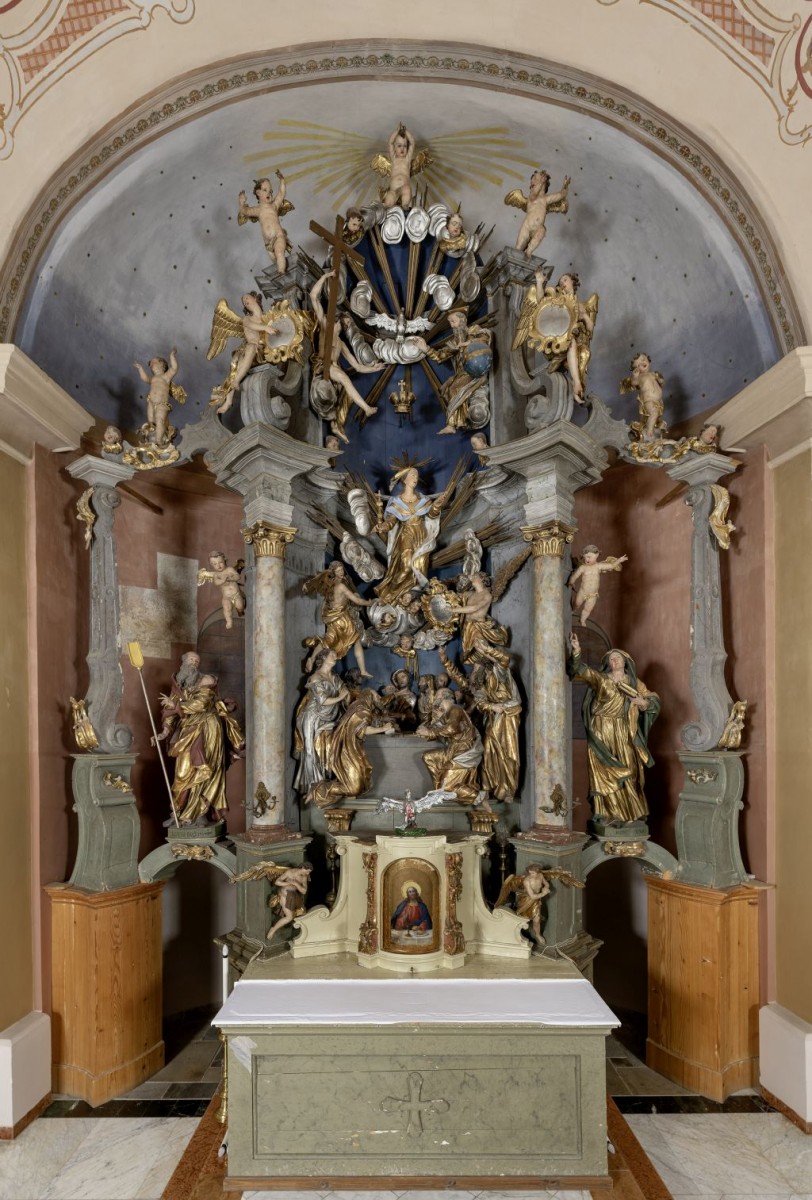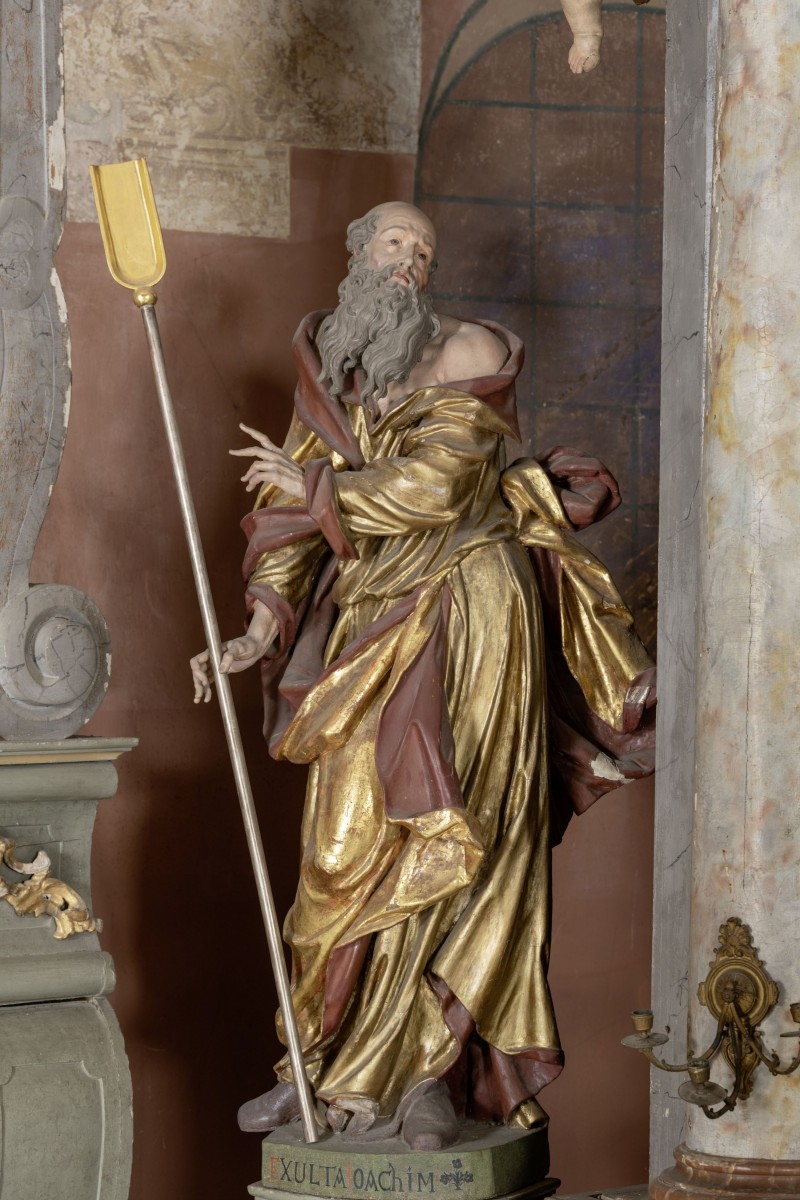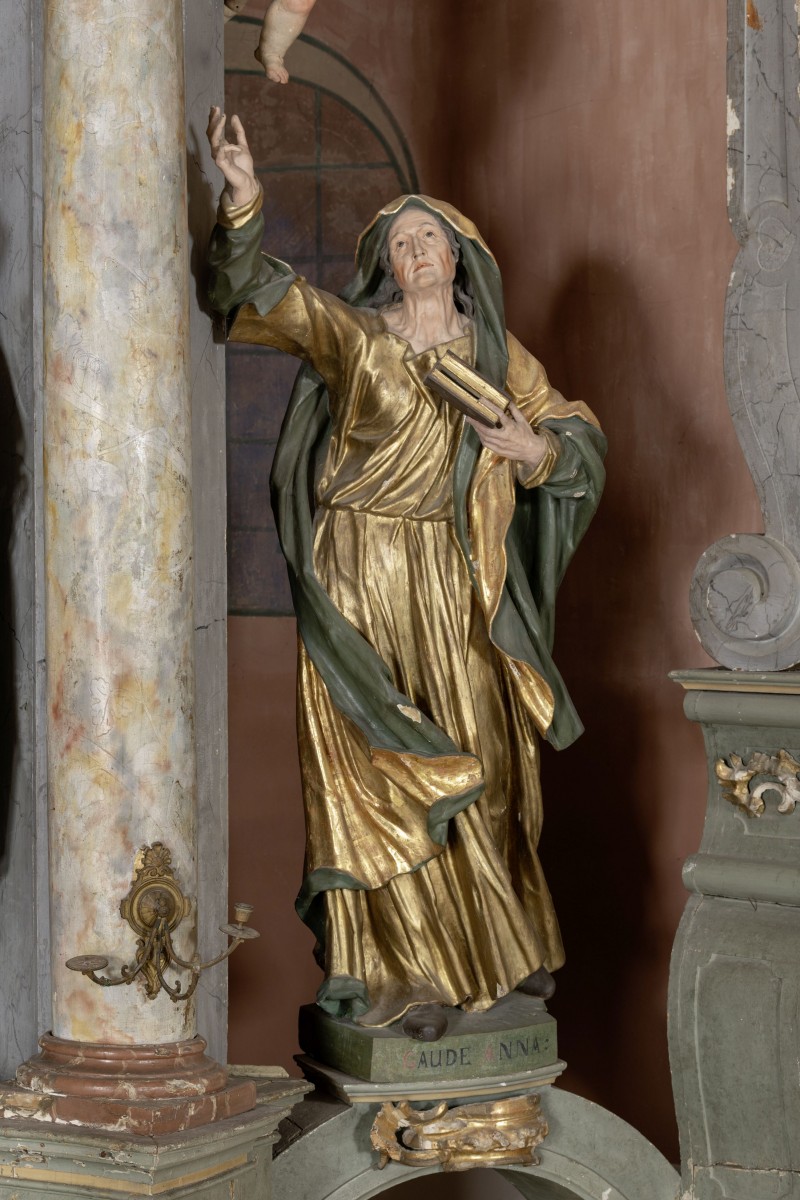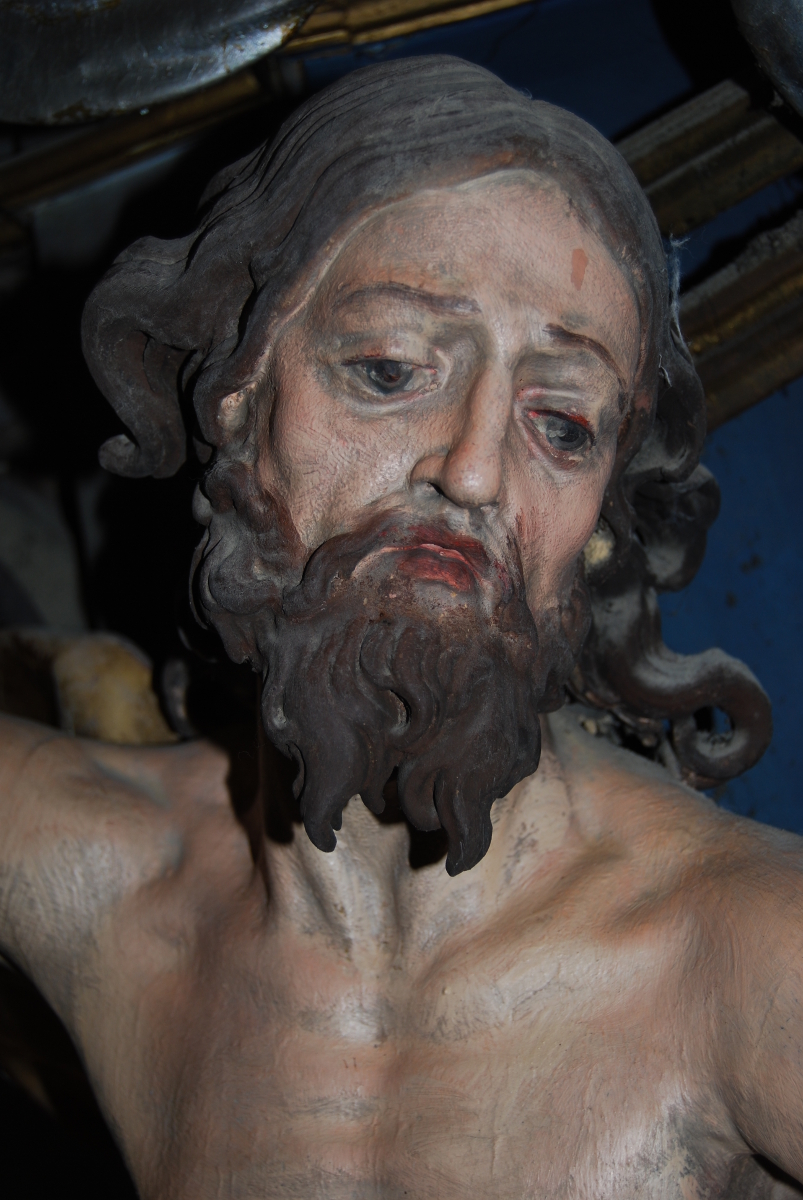Location
Croatia, Krapina-Zagorje County, Zlatar
Parish Church of the Assumption of the Blessed Virgin Mary (Župna crkva Uznesenja Blažene Djevice Marije)
Artwork
High Altar in the Parish Church of the Assumption of the Blessed Virgin Mary in Zlatar
Type
High altar
Inscriptions
- 1758 (on the cartouche held by the large sitting cherub on the attic, not visible today due to repolychromy)
- ASSUMPTA/EST/MARIA/IN/COELUM (on the cartouche carried by the flying cherub low to the right of the Blessed Virgin)
- EXULTA IOACHIM (on the base of the sculpture of St Joachim)
- GAUDE ANNA (on the base of the sculpture of St Anna)
- Tomo Fuček / 12-7 1934 / 12 srpanj (the inscription made in pencil on the back side of the retable)
- 19 F IIL 34 (scratched in the supporting beam on the backside of the altar)
Critical History
The altar was first mentioned in the text of the Canonical visitation in 1758 as being newly erected thanks to the local nobleman Franjo Praskač,1 but without polychromy and gilding which were completed in 1762 when it was consecrated.2 The parish chronicle in 1762 described the altar and mentioned that the donor paid a high sum of 720 florens. It also mentioned that the two large sitting cherubs on the attic hold cartouches with the date (1758) and the donor's coat of arms inscribed, which are not visible today due to a repolychromy layer.3
The unique construction and the high quality of artistic performance were recognized in all publications,4 and by Doris Baričević in particular, who attributed the altar to Joseph Holzinger based on resemblance to his later known works.5 However, in 2006 Matej Klemenčič proposed a new attribution to Joseph Straub, due to the striking similarities of sculptures of St Anna and St Joachim with the sculptures from the parish church in Studenci (now in Pokrajinski muzej Maribor).6 If so, the high altar in Zlatar is most likely one of his latest works.
In 2018 Simona Kostanjšek Brglez and Boštjan Roškar proposed another attribution – to Philipp Jakob Straub, based on a comparison with his other attributed works (for example, the sculpture of St Anna with the sculpture of St Anna on the left side altar in Dravograd, which they also attributed to Philipp Jakob).7
Moreover, the sculpture of St Joachim can be compared in posture and details of drapery to the sculpture of St Joseph, and in the details of beard and face to the sculpture of St Joachim, both on the side altar of Mary in the transept of the parish church in St. Paul im Lavanttal in Austrian Carinthia, attributed also to Philipp Jakob Straub.
The altar was renovated in 1934 by Josip Andres and his daugther,8 probably in cooperation with the carpenter Tomo Fuček (Ins 5 and 6).
Construction / Execution
The altar is situated in the chancel, where it occupies the entire rear wall of the apse. There are side openings on both ends. The central sculptural scene of the Assumption extends towards the attic zone where the Holy Trinity awaits Mary carried by angles and clouds. The sculptures of St Joachim and St Anna stand above side openings. The sculpture of St Joachim lacks his shepherd's crook.
Components
- Carpentry
- Author: Joseph Straub (Wiesensteig 1712 – Maribor 1756)
- Completed: 1758
- Patron(s): Franjo Praskač, noble
- Technique(s): sawing, wood carving
- Material(s): softwood
- Sculpture
- Author: Joseph Straub (Wiesensteig 1712 – Maribor 1756)
- Completed: 1756
- Patron(s): Franjo Praskač, noble
- Technique(s): wood carving
- Material(s): limewood
- Sculpture
- Author: Joseph Holzinger (Limbuš 1735 – Maribor 1797)
- Completed: 1758
- Patron(s): Franjo Praskač, noble
- Technique(s): wood carving
- Material(s): limewood
- Polychromy
- Completed: 1762
- Technique(s): water gilding
- Material(s): gold leaf, red bole, yellow bole
- Polychromy
- First repolychromy
- Author: Josip Andres
- Completed: 1934
- Material(s): metallic pigment
Conservation-restoration
- 1994
Strategy: removing dirt, removing one or several historic repolychromies, removing varnish
Approach to the presentation of losses
Reintegration of lacunae – mimetic: total
Reconstruction of losses: total
Treatment Description
The sculptures of St Joachim and St Anna were partially restored in 1994 for the purpose of Sveti trag (Holy trail) exhibition in Zagreb, when the 18th-century polychromy was exposed. It seems that the repolychomy was preserved on the coloured part of the garment, probably due to the delicacy of the glazed surfaces.
- 2011
Strategy: preserving one or several repolychromies, preserving patina, preserving varnish, removing dirt
Approach to the presentation of losses
Preserving lacunae: total
Materials: demineralized water, ethyl alcohol, metal screws, petroleum benzine, PVA adhesive, rabbit-skin glue, Shellsol T, wood, wood powder, wooden pins
Treatment Description
The on site conservation of the attic was carried out in 2011 by the Croatian Conservation Institute (led by Edo Anušić). The treatment included structural consolidation, as well as the cleaning and consolidation of wood and polychromy. 9
Images
- Zlatar, high altar (Photo by Croatian Conservation Institute, G. Tomljenović, 2018)
- Zlatar, high altar, the sculpture of St Joachim (Photo by Croatian Conservation Institute, G. Tomljenović 2018)
- Zlatar, high altar, the sculpture of St Anna (Photo by Croatian Conservation Institute, G. Tomljenović 2018)
- Zlatar, high altar, the sculpture of Jesus Christ (Photo by Croatian Conservation Institute Photo Archive, Edo Anušić, 2011)
Catalogue entry prepared by Martina Ožanić and Ksenija Škarić
Recommended citation: Martina Ožanić and Ksenija Škarić, High Altar in the Parish Church of the Assumption of the Blessed Virgin Mary in Zlatar, in: TrArS – Tracing the Art of the Straub Family, 2018, (accessed 21/10/2025) URL




